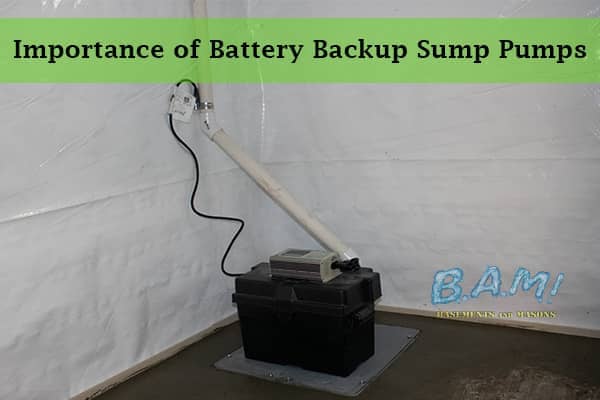All About Best Basement Waterproofing
Table of ContentsGetting The Best Basement Waterproofing To WorkThe Facts About Best Basement Waterproofing RevealedHow Best Basement Waterproofing can Save You Time, Stress, and Money.How Best Basement Waterproofing can Save You Time, Stress, and Money.Some Known Details About Best Basement Waterproofing
AdvantaClean's trained experts and service technicians will certainly situate the water resource. If wall surface or piece cracks are present, we will inject polyurethane and epoxies into the cracks and seal the concession, protecting against further dampness from entering.Proper grading around the home to direct moisture far from the framework. Putting up, fixing, or cleaning rain gutters and downspouts. Interior or exterior waterproofing with filler, sealant, and/or water-proof paint. Mounting basement ventilation systems, conditioning systems, or basement dehumidifier systems to get water out of your cellar. Picking AdvantaClean's cellar waterproofing solutions is an efficient way to treat moisture and prevent mold and mildew from endangering the framework of your home and the wellness of your family members.
If there's condensation on the outside of the aluminum foil, you have high humidity in your cellar. If the foil has condensation on the within surface (following to the wall surface), the soil around your house might be naturally damp from a high water table or bad soil water drainage.
You can waterproof just your indoor walls, which may address the issue. Once they dry out, they stick permanently to concrete and masonry walls.
Unknown Facts About Best Basement Waterproofing
Concrete water resistant finishings can not be used to formerly repainted surfaces; examine the tag. Understood as densifiers, they are suitable only for wall surfaces that haven't been painted or secured.
But you brush, roll, or spray it on far more thickly one gallon covers just 75 square feet, not the 300 square feet typical with common paint. Water resistant paint is fine for DIY application. You can use it over repainted surface areas, and paint over it once it's treated (one gallon expenses $37).
It can set you back $10,000 to $15,000, depending on the job needed (Best Basement Waterproofing). Exterior waterproofing entails excavating all around the house to the complete depth of the structure walls, after that installing a water-proof finishing or membrane covered by drainage panels.
Best Basement Waterproofing Things To Know Before You Get This
A basement without waterproofing is kind of like that. Your basement doesn't want to go with a downpour without appropriate security just as much as you don't want to.
Outside waterproofing is informative post a waterproofing approach that entails securing your home from the outside. It's kind of like a moat around a castle. It involves excavating a trench around your whole home down to the foundation (about 8 to 10 feet down). The foundation wall surfaces are after that cleaned up, sealed, and covered with a waterproof membrane or sealer.

Best Basement Waterproofing - Questions
It's a much more involved procedure that needs digging up your backyard, which is pricey and taxing. Exterior waterproofing includes eliminating every little thing bordering your home, consisting of decks, driveways, walkways, landscape design, air conditioning devices, decks, and more. If any of the job was done incorrectly and water is still entering your cellar, there isn't much you can do to correct or repair it.
Interior basement waterproofing entails waterproofing from the inside. Any kind of water that leaks right into your basement is redirected prior to it touches your floor. It's sort of like wearing a look at this website raincoat under your garments. It involves 2 things: a water drainage track and a sump pump. It functions by sealing the within your cellar walls and floors so water that attempts to enter is channeled out with a sump pump.
It's a reliable approach to water-proof your cellar. The disadvantage of indoor cellar waterproofing primarily has to do with the installment procedure.
Best Basement Waterproofing for Beginners
In conclusion, exterior and interior basement waterproofing are both reliable methods of securing your home from water damage. Exterior waterproofing creates an obstacle that stops water from entering your home, while indoor waterproofing redirects water that does enter your home. And it is essential to keep in mind that exterior waterproofing is an expensive and disruptive installation procedure when contrasted to interior waterproofing.
Whichever approach you select, make certain you pick a reliable and reliable professional for the work. If you have any inquiries regarding cellar waterproofing, please reach out to us.
You can fill in our kind below. Best Basement Waterproofing, start a chat in the bottom right-hand corner, or call us at 1-800-827-0702